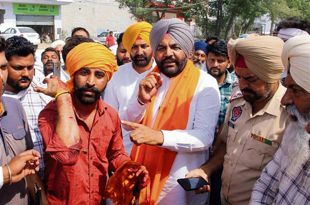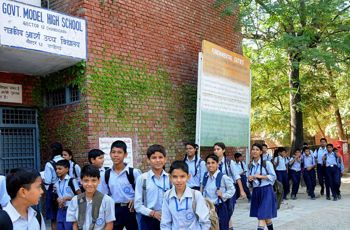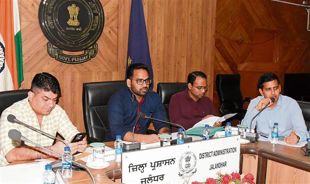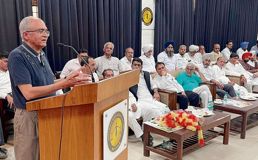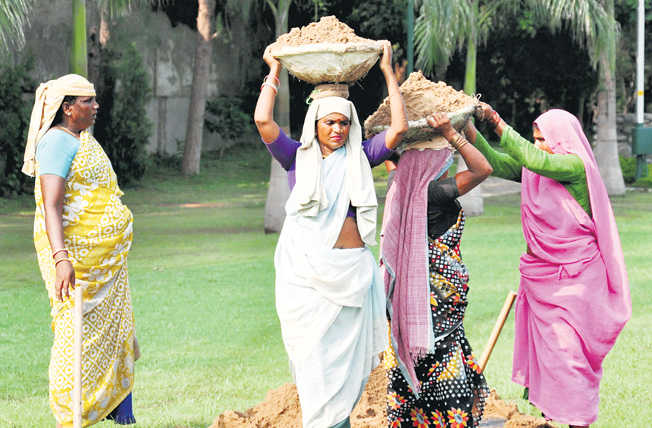
S Subramanian
IN the two earlier columns on the ‘poverty line’, it was argued that when we speak of such a line we mean — or should mean — a level of income which is adequate to secure the necessities of life, or to secure satisfactory levels of achievement with respect to a set of identified and basic human functionings, such as the ability to be well-nourished, decently clothed, sheltered against the inclemency of the weather, free of ignorance and ill-health, and reasonably mobile. In such a view, income or resources or commodity bundles are a means, which might well be variable across individuals and contexts, to the end of achieving a certain absolute freedom from deprivation in the space of human functionings, conceived of as states of being and doing.
For any measure to be consistent and amenable to comparison across contexts, the norm or standard of measurement must be unchanging in a relevant space. So suppose I am comparing the lengths of two objects, say the longer sides of two tables, and I measure the length of the first table in feet by means of a foot rule, then I must measure the length of the second table also by means of a foot rule (made of any material): that is, the measuring rod must be identical in the space of length, and it would be meaningless to seek constancy of the measuring rod in the space, say, of weight. (A wooden foot rule may be twice the weight of a plastic foot rule. If the first table is 10 plastic foot rules long, and the second table is 10 wooden six-inch-rules long, then the first table is twice the length of the second table even though we have preserved invariance of the measuring rod in the space of weight — which just happens not to be the relevant space in which to preserve invariance when we are measuring length.)
As with length, so with poverty. The poverty line may be specified in terms of the monetary value of some given commodity bundle. But for comparisons of poverty across space or over time to be meaningful, we must preserve invariance of the poverty standard in the space of functionings, not of incomes or commodity bundles or resources in general. In the previous piece on the poverty line, we noted that the World Bank’s ‘dollar-a-day’ global poverty line preserves invariance in the space of ‘real income’ (or income adjusted only for price variations). This is not unlike preserving constancy of the measuring rod’s weight when we are comparing lengths. What about India’s official poverty lines?
Over the last twenty-five years there have been three expert committees that have overseen the determination of a consumption expenditure poverty line for India. There was the 1993 expert group headed by Prof DT Lakadawala, the 2010 expert group headed by Prof SD Tendulkar, and the 2014 expert group headed by Prof C. Rangarajan. Alas, all three expert committees seem to have got the space in which invariance of the poverty norm must be sought wrong: all of them prescribe invariance of the commodity bundle corresponding to the poverty line level of consumption expenditure (although a different commodity bundle in each case).
How is the ‘poverty line commodity’ bundle to be determined? Without getting into complications of detail, the official Indian practice has been to fix the commodity bundle in terms of that package of goods and services which corresponds to the level of consumption expenditure at which a norm of nutritional adequacy is observed to be achieved in some chosen ‘reference’ year. For the 1993 expert group, the reference year was 1973-74; and the poverty line was selected as that level of consumption expenditure at which a calorific consumption of 2400 kilocalories per person per day in the rural areas and of 2100 kilocalories in the urban areas was observed to be realised, on the basis of survey data on the distribution of calorific consumption and of expenditure across expenditure size-classes. By this reckoning, rural and urban consumption expenditure poverty lines for 1973-74 were arrived at. Through a similar procedure, the 2010 expert group arrived at poverty lines for 2004-05 as the reference year, and the 2014 expert group arrived at poverty lines for 2011-12 as the reference year. The poverty lines in subsequent years were (effectively) derived by re-valuing the reference year commodity bundles at contemporaneously ruling prices. What was to be kept unvarying across contexts of comparison was therefore the ‘poverty line commodity bundle.’
This procedure has been a recipe for complete confusion. It has been discovered that as we move forward in time, the officially ‘price-corrected’ poverty lines progressively fall short of the calorific norms on the basis of which they were initially rationalised. This phenomenon has come to be described as a ‘calorie drift’. In some ways such a drift is perhaps inevitable, if relative prices should move against food items over time, or if resources such as firewood for fuel should become transformed from common pool resources to marketised and priced commodities, or if people’s ‘preferences’ (or more realistically and ironically, ‘needs’) were to shift more urgently toward non-food items vis-à-vis food items. The basic ‘demand theory’ predicts as much, and official procedures of fixing the poverty line have been, and continue to remain, impervious to basic theoretical considerations.
On the basis of its dubious methodology, official poverty lines have displayed a pleasing time-trend of declining headcount ratios of poverty. But the choice of the reference year is essentially arbitrary. We discover that, as we move the reference year forward in time, the declining trend is preserved, but at embarrassingly larger and larger magnitudes of the headcount ratio. What is worse, and as economist Utsa Patnaik has demonstrated, if each year in our time-series is treated as the ‘reference year’, that is, if the poverty line in each year is directly reckoned as the level of consumption expenditure at which the chosen calorific norm is observed to be realised in that year, then we obtain a profile of increasing headcount ratios! What does this imply? It implies that the official methodology has thrown the door open to complete anarchy. What magnitudes and trends of poverty ratios obtain becomes a function of what year(s) we choose as our reference year(s), not a function of actual poverty-related events on the ground.
What is more, and as Marx observed in Capital, the socially necessary means of subsistence in any society at any point of time are always ‘practically known’. Most people with some experience of living in a city such as Chennai would recommend a poverty line of Rs.15,000 per month for a family of five. The official poverty line works out to only around 60 per cent of this figure. Is poverty then best tackled by understating magnitudes and trends through expert fiats and official bluff? Or, rather, through active state intervention which is responsive to public demands that sense and scruple must not be sacrificed in the interests of convenience and expediency?
— The writer is National Fellow, Indian Council of Social Science Research





















